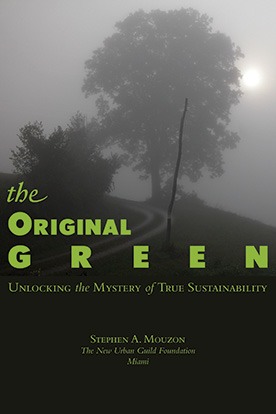search the Original Green Blog

There's a thorny question that preservation and sustainability must answer if they hope to make it to the altar for the marriage of these two ideas that should be considered one. Here’s the question: When is a tear-down a more sustainable choice than preserving a building?
Preserving
On the one hand, how can we sustain things if we can't preserve them? Things we don't tear down are inherently more sustainable than what gets demolished because the carbon footprint of a building is meaningless once its parts have been carted off to the landfill.
Demolishing

We have, unfortunately, built some of the most unsustainable places and buildings in human history over the past century, which is not entirely surprising because it was during this time that we have experienced the greatest energy glut humanity has ever known. Le Corbusier famously encapsulated the ethos of this era: "I shall live 30 miles from my office in one direction, under a pine tree; my secretary will live 30 miles away from it too, in the other direction, under another pine tree. We shall both have our own car. We shall use up tires, wear out road surfaces and gears, consume oil and gasoline." Our buildings followed suit, because we expected electricity to eventually become too cheap to meter.
So now energy hogs are scattered all across the American landscape. We've tried to retrofit them over the years, but the best we can do in most cases is invest in better gizmos. Perhaps the rise of Gizmo Green should come as no suprise.
The Place

So what should we do? Anyone familiar with this blog knows that it's essential to build sustainable places before it's meaningful to talk about green buildings within them. And while sprawl is cancer of the city, it is possible to recover from sprawl, transforming even the most egregious subdivisions and strip malls into sustainable places over time. If a place is already sustainble or is committed to achieving sustainability through sprawl recovery, then the question of where to live boils down to these:
Existing Home

vibrant neighborhood center
The most sustainable thing is to fall in love with an existing home in a thriving neighborhood with lots of workplaces and shops nearby so that your web of daily life is mostly or even entirely within walking distance. This is usually the simplest choice; sometimes you can find a home that's a good enough fit that you can move right in with little more than a coat of paint.
Vacant Lot
The next-best choice is to find a vacant lot in that same thriving neighborhood. Such lots usually have a street in front and maybe an alley in back, as well as water, sewer, electricity, and other utilities already installed… so your home won't require new infrastructure to be installed.
Harder Choices
Those two were easy… now on to the tougher ones. What if you can’t find an existing home or a vacant lot that works for you? Thriving neighborhoods with lots of shops and workplaces and filled with lovable homes are usually quite expensive, so maybe you simply can’t afford to buy or build there. If not, three not-so-easy choices remain: buy a house in an unsustainable place or build a house either where nothing has been built before (a greenfield) or where something has been built before (a tear-down).

great Walk Appeal
If you buy a house in an unsustainable place like a 20th-century subdivision, you need to be committed to being the neighborhood activist that assures that your subdivision enacts a vigorous Sprawl Recovery program. Building where nothing has been built before means new infrastructure is being installed for your building and you are likely building further from existing services. Many argue that this is the worst choice, and I agree… if the developer isn’t committed to building a place with high Walk Appeal that is compact and has a mix of uses to which you can walk to your daily needs. That leaves us with tear-downs, and the virtue of a tear-down depends largely on what is being torn down.

post-1980 sprawl
Tear-Down Indicators
The best tear-down candidates were built during the "Dark Ages of Architecture," which is the half-century between 1930 and 1980 when the wisdom of designing sustainably and building well had been lost… and the years since have only seen a slow recovery, so we're not so far ahead of 1980 as I would like. Here are some indicators of houses that were never built to last:
• 8’ Ceilings: This is an idea imported from the cold Northeast where it made perfect sense to the deep South where its implementation has wretched consequences… and is almost impossible to fix. It also vertically compresses the proportions of most architecture, making it less lovable.

8’ ceilings in their native environment
• 2x4 Exterior Walls: Unless you’re in the southernmost reaches of the US, 2x4 exterior walls don’t allow for enough insulation.
• Slab on Grade: A house built close to the ground can’t be far enough from the street that people feel comfortable sitting on the porch, which is a huge indicator of an unwalkable place. It’s also far more susceptible to flooding than a house that is properly raised. One more thing… slab-on-grade houses are typically some of the most unlovable houses you can find, because those building cheap and fast in the post-WWII decades didn’t care much about the lovability of their products.
• Brick Veneer: This is a construction technique that uses a thousand-year material in a 50-year configuration. Let the steel lintels go without painting for just a few years so that they rust, and you've got to rip it all off.
• Drywall: As we discussed last year, drywall only works so long as you keep it dry so you can’t afford to open your windows to catch a summer breeze because a summer shower may pop up, and a bit of rain through the window will turn your drywall into a mucky, moldy, mildewy mess.
The modern preservation movement began with the destruction of Penn Station, a lovable building designed to last centuries that was replaced by the wretchedly unlovable Madison Square Garden. It was easy for millions to get behind such a movement. But many in the preservation movement now support preserving buildings that are not lovable, durable, adaptable, or frugal… and are therefore unsustainable. I hope the movement has not lost its way.
~Steve Mouzon

You'll receive an email from me with the subject line "Mouzon Design: Please Confirm Subscription." Click Yes to confirm your subscription for Walk Appeal book updates.


